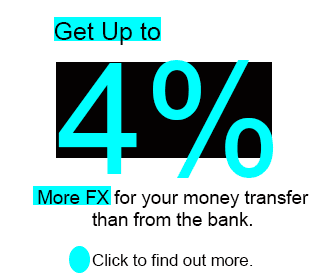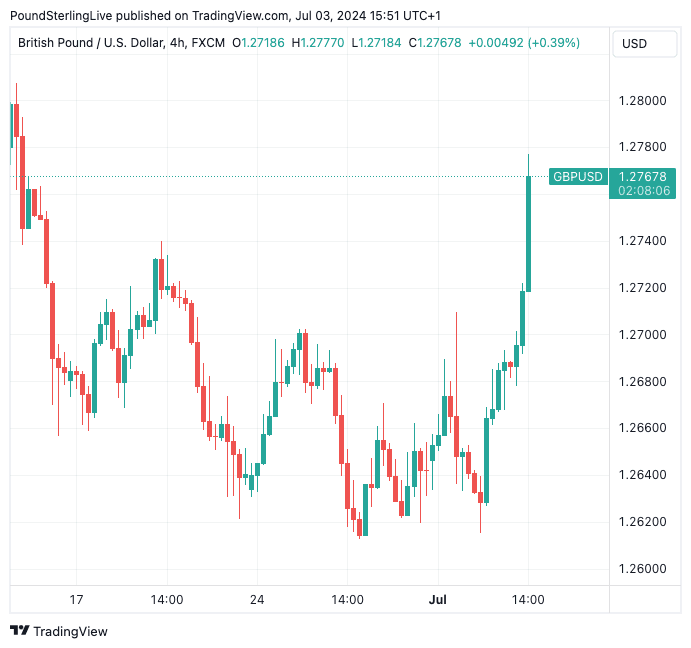Dollar Falls as the Mighty Services Sector Slips into Contraction
- Written by: Gary Howes
-

Image © Adobe Images
The Dollar fell after a weekly survey revealed an increase in the numbers seeking out-of-work benefits, but selling interest really hit its stride after the ISM survey of the services sector showed an unexpectedly sharp slowdown in activity.
The headline ISM services PMI read at 48.8% in June, a level that signals a contraction in activity, down from 53.8% in May. The undershoot relative to expectations was significant as the consensus was prepared for a reading of 52.5%. Services businesses form by far the largest sector in the U.S. economy.
Markets are reacting to the scale of the miss and are betting the Federal Reserve will feel confident enough to cut interest rates in September. In response, U.S. bond yields are down, the Dollar is down and stocks are up.

The Pound to Dollar exchange rate has smashed through the 1.27 level and is presently quoting at 1.2770. Euro-Dollar is higher by a similar margin at 1.0790.
The ISM report showed businesses expecting higher new orders fell to 47.3%, which is the lowest level recorded since the Great Financial Crisis and lower than the 2001 recession. The Prices Index registered 56.3% in June, a 1.8-percentage point decrease from May’s reading of 58.1%.
"This certainly boosts the case for a September interest rate cut from the Federal Reserve as it ticks all the boxes of weaker growth, slowing inflation and a deteriorating jobs market. The Fed doesn’t want to cause a recession if it can avoid it," says James Knightley, Chief International Economist at ING Bank.
Above: GBP/USD at four-hour intervals. Track GBP/USD with your own alerts, find out more here.
An hour-and-a-half earlier it was reported by the Department of Labor that the number of Americans filing new claims for unemployment benefits increased last week by 4K to a seasonally adjusted 238K. The consensus expectation was for a more modest 235K.
U.S. Federal Reserve Chair Jerome Powell said on Tuesday that there was an opportunity to cut interest rates if the labour market deteriorated. This was a hint that the Fed would be open to a rate cut before inflation had moderated to the 2.0% target.
This means the onus is falling on the jobs market to deliver the interest rate cut many U.S. households, businesses and investors crave.
For the Dollar, rising odds of a rate cut result in weakness.
Continuing claims for unemployment insurance hit 1.858M in the week ending June 22, the highest level since late 2021.
"The labour market remains strong, but hiring is slowing," says Gus Faucher at PNC Bank. "The message from continuing claims is clearer. They are up from their levels in the second half of 2022 and all of 2023. Although the labour market is historically stronger, it is taking somewhat longer for unemployed workers to find jobs."
On Tuesday, Fed Chair Powell said in Sintra, Portugal, that if the labour market were to be "unexpectedly weak... this will also cause us to respond."
Markets have taken this as a sign that labour market developments will take on an added importance for policymakers between now and September. Friday's marquee non-farm payroll report will determine whether the Dollar ends the week on a stronger footing or whether a more pronounced selloff awaits in July.
"With regards to Friday’s jobs report, if we combine the manufacturing and service sector ISM employment numbers (and weight them 25%/75%), we are at levels historically consistent with non-farm payrolls FALLING 175k, not rising 190k as the consensus predicts for Friday," says Knightley.





